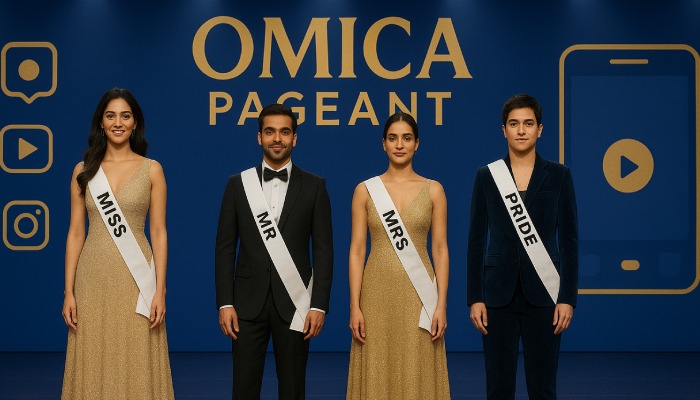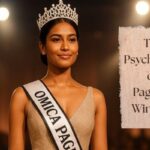Quick answer: Digital platforms decide who gets discovered, how applications are screened, how stories are told, how winners are chosen, and how revenue flows. If you’re entering or organizing a modern beauty contest, your results largely depend on search visibility, social content, live streaming, data-driven judging, and community engagement.
What this really means is:
- Discovery now happens on Google, Instagram, YouTube, and TikTok, not just posters or TV.
- Applications, video rounds, and callbacks run online, speeding up selection.
- Social content builds narrative and audience loyalty before finals night.
- Live shows are streamed, clipped, and shoppable, expanding reach and sponsors.
- Judging blends expert panels with transparent audience votes backed by data.
- Training, PR, and brand deals start months earlier through creator tools.
Why this matters in a modern beauty contest
Here’s the thing. The audience you need is already online. Platforms reduce costs, expand reach beyond city limits, and surface new talent that would never walk into a hotel audition. Contestants can prove stage readiness with content, not just a portfolio. Organizers can measure interest, not guess.
Discovery now = Search + Social
How contestants get found 👇
- Optimized bios, consistent handles, and searchable keywords in captions.
- Short-form videos that show a walk, intro, Q&A, talent, and personality.
- Thoughtful hashtags and geotags to reach local and national scouts
How organizers get found 👇
- Structured FAQs: Answer questions the way people actually type them into Google: “What is the age limit for this pageant?” or “Do I need prior modeling experience?” FAQs written in this style often capture featured snippets.
- Evergreen content: Beyond event updates, organizers who publish guides on topics like training, scholarships, and career opportunities in pageants attract traffic. This type of content positions your platform as a resource, not just a registration desk.
For example, our detailed breakdown on why beauty pageants matter for skills and scholarships, shows how to tie real benefits to participation.
Judging is more transparent and data-aware
- Panel scoring is now captured in live systems for accuracy.
- Public voting with caps and verification reduces manipulation.
- Weighted models keep audience input meaningful without overshadowing expertise.
- Clear criteria published ahead of time sets expectations and reduce disputes.
Personal brand beats portfolio
- A crisp intro video, a 20-second walk reel, and a 60-second cause pitch.
- A lean media kit: bio, niche, top posts, reach, engagement, and past stage work.
- A weekly content cadence you can sustain through prep and post-crown.
- Collaboration etiquette with photographers, MUAs, stylists, and local brands.
Training went digital too
- On-demand masterclasses for walk, posture, diction, and interview.
- Practice prompts for rapid-fire Q&A and current affairs.
- Virtual mock rounds recorded and annotated for feedback.
- Habit trackers to keep fitness, skincare, and rehearsal on schedule.
Metrics that actually matter
For contestants:
- Profile visits per post
- Saves and shares vs likes
- Average watch time and completion rate
- Comment quality (questions, not just compliments)
For organizers:
- Cost per qualified application.
- Stream peak concurrency and average watch time.
- Voter verification rate.
- Sponsor CTR and post-event uplift.
A practical playbook
If you’re a contestant 👇
- Define your story: three pillars only—cause, craft, character.
- Produce five evergreen assets: intro, walk, talent, Q&A, day-in-life.
- Post twice a week, go live once, and answer DMs in batches.
- Build a shortlist of local partners for looks and locations.
- Run two mock interviews on camera every week till finals.
- Set up a Link-in-Bio with your reels and media kit.
If you’re an organizer 👇
- Publish an eligibility page and FAQ that mirrors user queries.
- Move screening to video with a scoring rubric.
- Announce shortlists in content series, not just a PDF.
- Offer hybrid workshops to lift overall stage quality.
- Stream finals with live chat and meaningful audience voting.
- Close the loop: publish highlights, feedback, and next-season dates.
FAQs 💬
A: Digital-first discovery, online screening, social-led storytelling, hybrid judging, and streaming distribution. In short, a modern beauty contest treats content and community as core parts of the competition.
A: No. Consistency, stage skills, and interview strength still win. Audience data adds context, not a free pass.
A: Eight to twelve weeks before registrations close. You need time to find your voice and audience.
A: Short-form video for reach, YouTube for depth, Instagram for brand collabs, and your site or Link-in-Bio as the hub.
A: Verification, daily caps, IP/device checks, and a published weighting model alongside expert scores.
Final take
A modern beauty contest is a media product and a talent engine. If you adapt to search, social, and streaming, you’ll surface better talent, build trust with transparent judging, and grow audiences sponsors care about.
➮ Read next to complete the picture:
The Evolution of Beauty Contests → https://www.omicapageant.com/the-evolution-of-beauty-contests/






